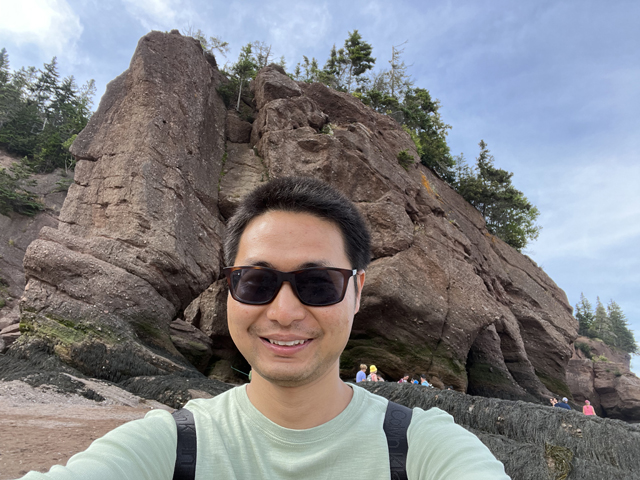15 May 2024–When it comes to seismic sources, observational seismologist Miao Zhang doesn’t play favorites.
“I am curious about all types of seismic events on land and at sea, ranging from tectonic and volcanic earthquakes to induced earthquakes and manmade explosions,” said Zhang, an assistant professor at Dalhousie University. “My students and I are actively contributing our expertise to the field of global seismology and marine seismology, including machine learning-based earthquake monitoring, accurate source parameter determination, nuclear explosions, induced earthquakes, ocean bottom seismometer data analysis and subduction zones.”
While the focus of a tectonic earthquake study may differ from that of a nuclear explosion, he said, the analysis of different events “involves highly overlapping techniques, such as the detection of events and their accurate source parameter determination.”
Zhang has looked for ways to apply new techniques across the span of seismic data throughout his career. Although he had little exposure to geophysics before graduate school at the University of Science and Technology of China, “I quickly fell in love with this major,” he recalled. With the help of his supervisor Lianxing Wen, Zhang developed an interest in seismology, eventually focusing on methods for the detection and location of small earthquakes.
One of his favorite research projects came during the fourth year of his Ph.D., he said. “I came across news and radionuclide studies reporting the 2010 low-yield nuclear test conducted by North Korea. I wondered if any seismologists had searched for this event. After an online search, I found one seismological paper that failed to detect a seismic signal supporting the existence of this event.”
 “Fueled by curiosity, I thought, ‘Why not give it a try using my own method and closer seismic stations in northeastern China?’ I quickly identified a seismic event with explosive features perfectly consistent with the radionuclide studies. The discovery left me so excited that I couldn’t sleep the whole night,” Zhang recalled.
“Fueled by curiosity, I thought, ‘Why not give it a try using my own method and closer seismic stations in northeastern China?’ I quickly identified a seismic event with explosive features perfectly consistent with the radionuclide studies. The discovery left me so excited that I couldn’t sleep the whole night,” Zhang recalled.
From 2016 to 2018, Zhang joined Los Alamos National Laboratory as a postdoc, working on geothermal exploration and carbon dioxide injection monitoring. “During my appointment at LANL, I gained insights into 3D waveform simulation and different inversion strategies,” he said. “I believe that these kinds of advanced techniques in exploration seismology are valuable and can benefit earthquake seismology.”
From 2018 to 2019, Zhang rejoined the world of tectonic earthquakes at Stanford University as a postdoc. “This experience not only reignited my passion for global seismology, but it also provided me with the opportunity to explore machine learning applications in seismic monitoring during its early stages,” he said.
Zhang said machine learning has already transformed the work of seismologists, particularly with research in earthquake monitoring and characterization. “These tools save a substantial amount of time in earthquake catalog building, an essential yet time-consuming task, allowing seismologists to dedicate more attention to scientific problems,” he noted.
Some of the problems that he would like to see machine learning applied to in the future include determining source parameters accurately and reliably in real-time for earthquake early warning. Someday, he hopes to see if machine learning can solve the biggest question in seismology – earthquake prediction.
Zhang also develops open-source software for seismic analysis, relying mostly on practical programming skills picked up during his career. As a first-year Ph.D. student, he took a course called “Inverse Problems in Geophysics,” where students worked through practical problems in earthquake location and tomography and submitted codes and project reports each week. “I struggled for a while at the beginning, working day and night to meet the deadlines. However, after completing this course, I taught myself different programming languages, including MATLAB, Fortran, and C,” he recalled.
Zhang has a habit of reading codes before using them, which has helped with his programming skills and provided him with a deeper understanding of data processing, waveform modeling and inversion methods. “Through this practice, I developed the confidence to understand, modify and write codes to tackle my own research problems,” he said.
His future research plans have the same sort of broad scope as his past projects. “My favorite project is still to detect and locate natural events and human and animal activities on land and at sea, even with limited seismic data,” Zhang said. “For instance, I may search for and analyze seismic recordings in regions that have reported anomalies or controversies, such as UFO sightings.”
SSA At Work is a monthly column that follows the careers of SSA members. For the full list of issues, head to our At Work page.
